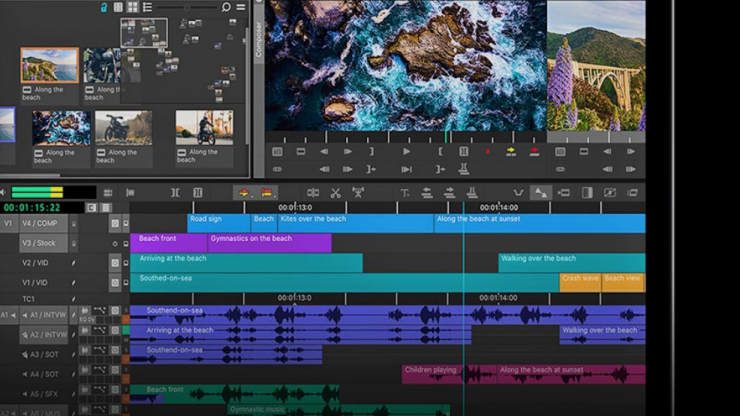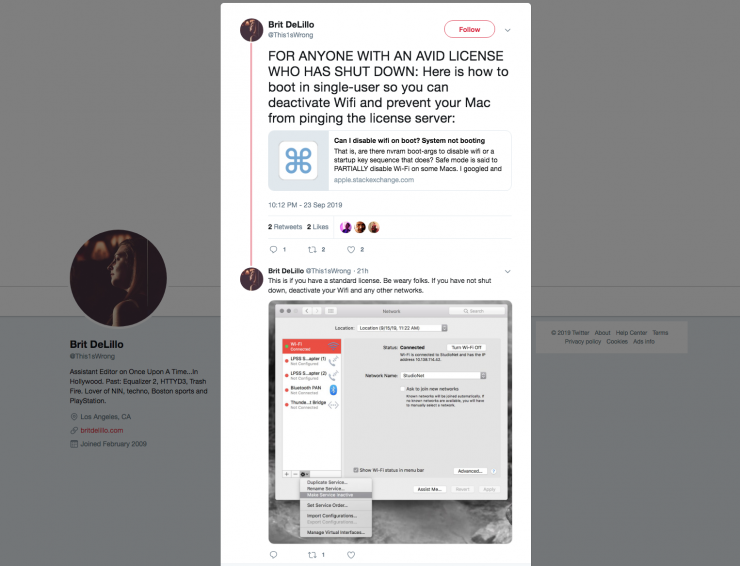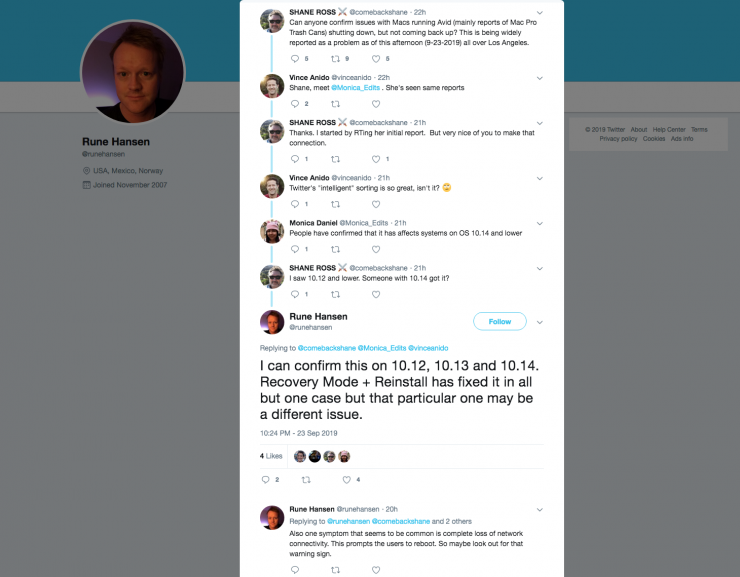
Update: The issue has now been found to be the result of a buggy Google Chrome update. See the latest article for instructions to roll back the update.
Editors in Hollywood have been reporting a widespread problem of Mac Pros crashing that are running Avid Media Composer. The reports indicate that Mac Pros shut down and then refuse to reboot back up.
This has caused big delays and problems for major productions using this combination of Avid Media Composer and the Mac Pro.
Editors flooded social media reporting the issues. It seems hard to pinpoint exactly what the problem may be. Reports have varied that the problem may stem from computers running older versions of macOS, to issues with Avid’s licensing USB dongle, possible corrupted files from recent updates, or even a virus.
Avid’s Response
Avid has responded quickly to reassure customers that they are trying to fix the issue as quickly as possible.
There has also been talk that it could be an issue with machines running Chrome. Chrome was previously found to be the cause related to some FCPX crashes.
In an update to the Avid community, Avid posted a video with Jeff Rosica, CEO & President, and Dana Ruzicka, Chief Product Officer. The video basically says that the Avid team continues to work diligently to determine the root cause and resolve the issue. It includes practical and preventative advice for its users. Avid will continue to update customers directly via their community forums and social media platforms.
10 a.m. EST Update
“Avid is aware of the reboot issue affecting Apple Mac Pro devices running some Avid products, which arose late yesterday. This issue is top priority for our engineering and support teams, who have been working diligently to determine and resolve the root cause. As we learn more, we will immediately publish information—directly to our customers and via our community forums and social media platforms—in order to resolve this issue for all affected customers and prevent any further issues.“
Avid
Avid is also linking users to an Apple Support page that deals with macOS Recovery. Below is what is listed on that page:
About macOS Recovery
The utilities in macOS Recovery help you restore from Time Machine, reinstall macOS, get help online, repair or erase a hard disk, and more.
macOS Recovery is part of the built-in recovery system of your Mac. You can start up from macOS Recovery and use its utilities to recover from certain software issues or take other actions on your Mac.
How to use macOS Recovery
Turn on your Mac and immediately press and hold Command (⌘)-R or one of the other macOS Recovery key combinations on your keyboard. Continue holding until you see the Apple logo or a spinning globe. Startup is complete when you see the utilities window:
macOS Utilities window
After starting up from macOS Recovery, select from these utilities, then click Continue:
Restore From Time Machine Backup: Restore your Mac from a Time Machine backup of your Mac.
Reinstall macOS (or Reinstall OS X): Download and reinstall the Mac operating system.
The Reinstall macOS utility installs different versions of macOS depending on the key combination you used while starting up. Learn how to reinstall macOS.
Get Help Online: Use Safari to browse the web and find help for your Mac. Links to Apple’s support website are included. Browser plug-ins and extensions are disabled.
Disk Utility: Use Disk Utility to repair or erase your startup disk or other hard disk.
These additional utilities are available from the Utilities menu in the menu bar:
Firmware Password Utility or Startup Security Utility
Network Utility
Terminal
To quit macOS Recovery, choose Restart or Shut Down from the Apple () menu. If you want to choose a different startup disk before quitting, choose Startup Disk from the Apple menu.
If you can’t start up from macOS Recovery
Newer Mac computers and some older Mac computers automatically try to start up from macOS Recovery over the Internet when unable to start up from the built-in recovery system. When that happens, you see a spinning globe instead of an Apple logo during startup. To manually start up from macOS Recovery over the Internet, press and hold Option-Command-R or Shift-Option-Command-R at startup. Learn more about these key combinations.
If you still can’t start up from macOS Recovery, you might need to reinstall macOS after starting up from another disk or volume, or by using a bootable installer.
macOS Recovery over the Internet, the Reinstall macOS utility, and the Get Help Online utility all require an Internet connection. If you need to connect to a Wi-Fi network, move your pointer to the top of the screen, then choose a network from the Wi-Fi menu in the menu bar.








